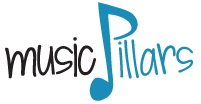Initial Assessment (for ALL Group and Individual Music Lesson types except Theater)
All students have their Initial Assessment with the Music Director or Assistant Music Director to determine the best place for them to get started. Before any student is eligible to be enrolled at Music Pillars, we want to have parents/students come to the studio and meet with us for about 20-30 minutes. There is no cost or obligation for this initial meeting. Read below to get a sense of what happens at an initial assessment and why we do them before any enrollment is discussed.
When scheduling an initial assessment, you are not complete until you click on the “TAP FINISH TO CONFIRM YOUR APPOINTMENT".
Coming over helps you (and your student) to check out what lessons would be like
Websites are helpful, but at the end of the day, you will be coming to the studio for lessons - so its always best for you to come over so you can see what it looks like. What are the Clavinova CVP 605s all about? What are some of the apps that are used in teaching, what are the studio rooms like, and so forth. This also gives you a chance to ask questions and gather more information. Also - we are not the right place for all families and musical interests and want to be able to help families (and us) determine that before beginning lessons together.
What happens at a typical assessment?
LOVE
First we'll take a few minutes to get a sense of what kind of music the student is passionate about. For younger students who cannot quite articulate that, we will play various styles for them and have them tell us.
PATTERN RECOGNITION
Then using the Clavinova we will take a little musical "tour around the world" and have the student clap the beat based upon the ever-changing style. This is both fun for the student because they have typically never been seated at a piano that has such an enormous range of non-piano sounds, and also helpful for MP because we can get a sense of where they are rhythmically.
AUDIATION
Using an app, we will then get a sense of what the student can differentiate in terms of sounds. This is like a "hearing test" but specifically designed for MP so that we can see how well the student can differentiate various chords by selecting a button after each chord.
SIGHT READING
If the student is new to music, then we pull out another app and after 10 seconds of explaining, we have them playing their first song using the app to provide them immediate feedback as to whether or not they are playing the correct note. This app is both fun for the student and insightful to us at MP because it helps us understand how well they can pick up on and recognition cues after just a short explanation. If the student is older and already has some ability to play, then we will first have them play something for us, and then based upon what they play - then find a sight-reading book that is roughly 1-2 levels below the piece that they played to get a sense of what they can read.
QUESTION/ANSWER PERIOD
Then we spend the rest of the time talking about the results, answering questions from the parent/student, and discussing any other points that may come up while sitting there together. MP will give the parent/student an honest assessment of what they saw - and then based upon ho MP and the parents are feeling, we will discuss possible lessons times and possibly discuss having the student join a particular band at MP, or maybe look at some other alternatives for the student if these don't feel like a good fit. Most of the time individual lessons are a good starting place at MP, and band invitations are only extended to intermediate/advanced students. For younger students (students under 10), we typically need to work with them for a few months before we can recommend and place them in a band that is a good fit for them and the band.
















